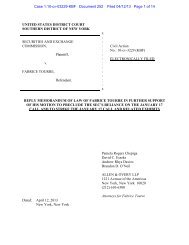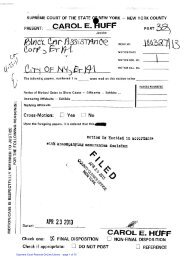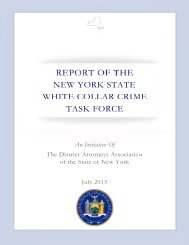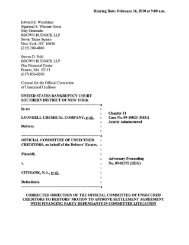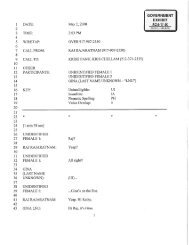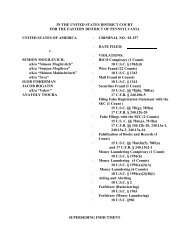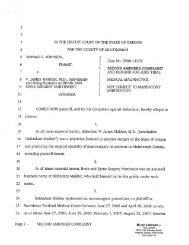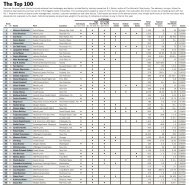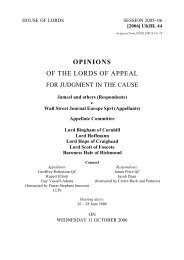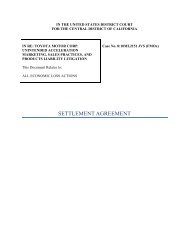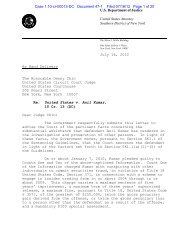Salz Review - Wall Street Journal
Salz Review - Wall Street Journal
Salz Review - Wall Street Journal
Create successful ePaper yourself
Turn your PDF publications into a flip-book with our unique Google optimized e-Paper software.
59<br />
<strong>Salz</strong> <strong>Review</strong><br />
An Independent <strong>Review</strong> of Barclays’ Business Practices<br />
venture between the investment bank and the Retail and Business Banking known as<br />
the Retail Sales Group. A high level of complaints emerged in 2008, when interest<br />
rates fell to historically low levels. Complaints frequently related to the high cost of<br />
the break clause which, in a lower interest rate environment, could be up to 20% of<br />
the notional value of the loan.<br />
6.26 Following press articles and complaints, the FSA launched a review into SME<br />
derivatives in 2012. The regulator found that Barclays, among other banks, had sales<br />
rewards and incentives schemes that could have exacerbated the risk of poor sales<br />
practice. 94 Moreover, in early 2013 the FSA reported that more than 90% of the<br />
interest-rate derivatives in their sample did not comply with at least one regulatory<br />
requirement. 95 While some clients may have understood the derivative arrangements,<br />
others did not and relied on the advice of their relationship manager. Some clients<br />
may have felt they had no choice if they wanted the loan. It is also likely that few had<br />
foreseen, when they took out protection against increases in interest rates, that there<br />
would be an unprecedented period of low rates – with costs they had not anticipated.<br />
This is very much a current issue for Barclays. For its year-end 2012 accounts, it<br />
announced £450 million for SME compensation during 2012 and a further<br />
£400 million in February 2013 (total £850 million). In addition, the bank is<br />
currently undertaking an SME sales review.<br />
6.27 It seems to us that Barclays should take care to ensure that complex derivatives<br />
products manufactured in the investment bank and sold to less sophisticated<br />
customers in the retail bank are properly understood by whoever oversees the sale to<br />
the Barclays customer. We noted that, since the experience on these cases, Barclays<br />
has increased its attention to customer needs by improving its sales processes to<br />
ensure that risk is appropriately explained, especially when dealing with small<br />
businesses. In addition, some pay arrangements for staff are being reviewed to<br />
encourage employees to give due consideration to customer suitability. Again, we<br />
consider it likely that the issues arising from the sales of derivatives to SMEs could<br />
have been reduced if the culture within the bank had placed higher priority on<br />
meeting the needs of customers.<br />
Investment Funds<br />
6.28 Barclays misclassified two fund products developed by a fund management affiliate<br />
of Aviva which it sold to customers between 2006 and 2008. The products were:<br />
― A so-called Global Cautious Income Fund, which should have been labelled<br />
as a risky investment;<br />
― A Global Balanced Income Fund, which was also more risky than described.<br />
6.29 Aviva itself rated the funds as four out of five on a risk scale, with five being highrisk.<br />
96 However, using an accelerated classification process, Barclays incorrectly<br />
94 FSA, “FSA agrees settlement with four banks over interest-rate hedging products” (FSA/PN/071/2012),<br />
press release, 29 June 2012.<br />
95 Source: FSA, “FSA confirms start of full review of interest-rate swap mis-selling” (FSA/PN/010/2013),<br />
press release, 31 January 2013.<br />
96 Aviva later reclassified the Cautious Income Fund to three out of five – i.e., medium risk.




